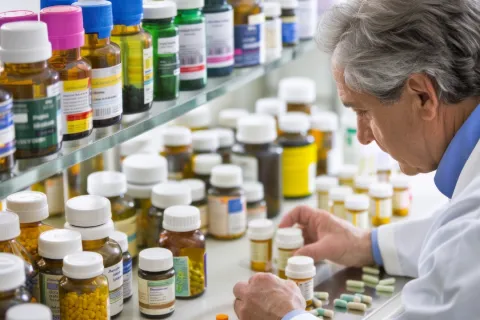
Following the guidance in September 2020 on mitigating the risk of nitrosamine impurities in drug products, the United States Food and Drug Administration (USFDA) has recently suggested alternate approaches to reduce the formation of nitrosamine in certain products. According to the latest update, some methods can be incorporated by manufacturers for the prevention of such contaminations. These approaches are based on reports on certain types of nitrosamine impurities in varied drug types.
According to the FDA, the risk of Nitrosamine Drug-Substance-Related Impurities (NDSRIs) being formulated in certain drug products and the inactive substances therein, such as even water, has increased. The formation of NDSRIs can either happen during drug manufacturing or after their distribution in the market. These are hard to identify since they are structurally similar to the Active Pharmaceutical Ingredient (API) that is being contaminated. Even a small presence of nitrite impurities in the excipients such as parts-per-million amounts is said to cause an NDSRI. So, it is important to address the risks involved and ensure corrective steps to avoid the formation of nitrosamine in drugs, whether it is at the manufacturing stage or in the shelf-life storage period.
Per the guidance updated in 2020, the FDA had outlined a supplier qualification program to access these impurities across excipient suppliers and lots. In the latest guidance, other approaches such as the usage of the following substances in reducing the nitrosamine levels have been mentioned.
Alternate Methods to Reduce Nitrosamine Levels in Drugs
Ascorbic Acid
Based on a few reports, it has been observed that the usage of ascorbic acid (Vitamin C) or alpha-tocopherol (Vitamin E) reduces the formation of nitrosamines. The results are based on human gastric fluids in vitro studies.
Antioxidants and Amino Acids
Another approach that is proven to be effective in preventing the formation of NDSRIs is using antioxidants and amino acids in oral dosage forms.
Sodium Carbonate
The use of excipients such as sodium carbonate is yet another method that has been highlighted by the FDA in curbing the formation of nitrosamine impurities in drug products. This substance is known to produce a neutral or basic pH microenvironment, thus preventing the impurities from being formulated.
Since the addition of any of these substances is a reformulation of the drug product, the FDA advised the manufacturers to identify the benefits of the alternative approach that they are applying and demonstrate its aptness to the Agency. However, the manufacturers can make the changes in the formulation as long as they follow the prevalent Good Manufacturing Practices (GMP). The update also mentions that a meeting with the FDA is not necessary for the submission of supplements or amendments in this regard.
To Conclude
Nitrosamine impurities can cause major health risks; hence Health Authorities across the world are taking steps to prevent them in drug products. This brings about significant Regulatory changes, and manufacturers need to be aware of the latest updates that are being published by the respective agencies. If you are looking for an expert who will help you in every Regulatory process/activity of drug manufacture and distribution, contact Freyr for a compliant strategy.









